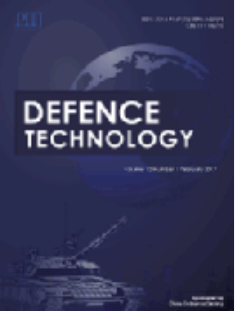Comparative study on the oblique water-entry of high-speed projectile based on rigid-body and elastic-plastic body model
IF 5
Q1 ENGINEERING, MULTIDISCIPLINARY
引用次数: 0
Abstract
To examine the similarities and differences in the evolution of cavity, wetting and dynamics of a high-speed, oblique water-entry projectile with different positive angles of attack, a comparative analysis has been conducted based on the numerical results of two mathematical models, the rigid-body model and fluid-structure interaction model. In addition, the applicable scope of the above two methods, and the structural response characteristics of the projectile have also been investigated. Our results demonstrate that: (1) The impact loads and angular motion of the projectile of the rigid-body method are more likely to exhibit periodic variations due to the periodic tail slap, its range of positive angles of attack is about α < 2°. (2) When the projectile undergone significant wetting, a strong coupling effect is observed among wetting, structural deformation, and projectile motion. With the applied projectile shape, it is observed that, when the projectile bends, the final wetting position is that of Part B (cylinder of body). With the occurrence of this phenomenon, the projectile ballistics become completely unstable. (3) The force exerted on the lower surface of the projectile induced by wetting is the primary reason of the destabilization of the projectile trajectory and structural deformation failure. Bending deformation is most likely to appear at the junction of Part C (cone of body) and Part D (tail). The safe angles of attack of the projectile stability are found to be about α ≤ 2°.
基于刚体和弹塑性模型的高速弹丸斜入水比较研究
为了研究不同正攻角的高速斜入水弹丸的空腔、润湿和动力学演变的异同,我们基于刚体模型和流固耦合模型两种数学模型的数值结果进行了对比分析。此外,还研究了上述两种方法的适用范围以及弹丸的结构响应特性。研究结果表明(1) 刚体法弹丸的冲击载荷和角运动更容易因周期性尾拍而呈现周期性变化,其正攻角范围约为α < 2°。(2) 当弹丸发生明显润湿时,润湿、结构变形和弹丸运动之间会产生强烈的耦合效应。根据所应用的弹丸形状,可以观察到当弹丸弯曲时,最终的润湿位置是 B 部分(弹体的圆柱体)。出现这种现象后,弹丸的弹道变得完全不稳定。(3)润湿对弹丸下表面产生的作用力是弹丸弹道失稳和结构变形失效的主要原因。弯曲变形最有可能出现在 C 部分(弹体锥体)和 D 部分(弹尾)的交界处。弹丸稳定的安全攻角约为α≤2°。
本文章由计算机程序翻译,如有差异,请以英文原文为准。
求助全文
约1分钟内获得全文
求助全文
来源期刊

Defence Technology(防务技术)
Mechanical Engineering, Control and Systems Engineering, Industrial and Manufacturing Engineering
CiteScore
8.70
自引率
0.00%
发文量
728
审稿时长
25 days
期刊介绍:
Defence Technology, a peer reviewed journal, is published monthly and aims to become the best international academic exchange platform for the research related to defence technology. It publishes original research papers having direct bearing on defence, with a balanced coverage on analytical, experimental, numerical simulation and applied investigations. It covers various disciplines of science, technology and engineering.
 求助内容:
求助内容: 应助结果提醒方式:
应助结果提醒方式:


